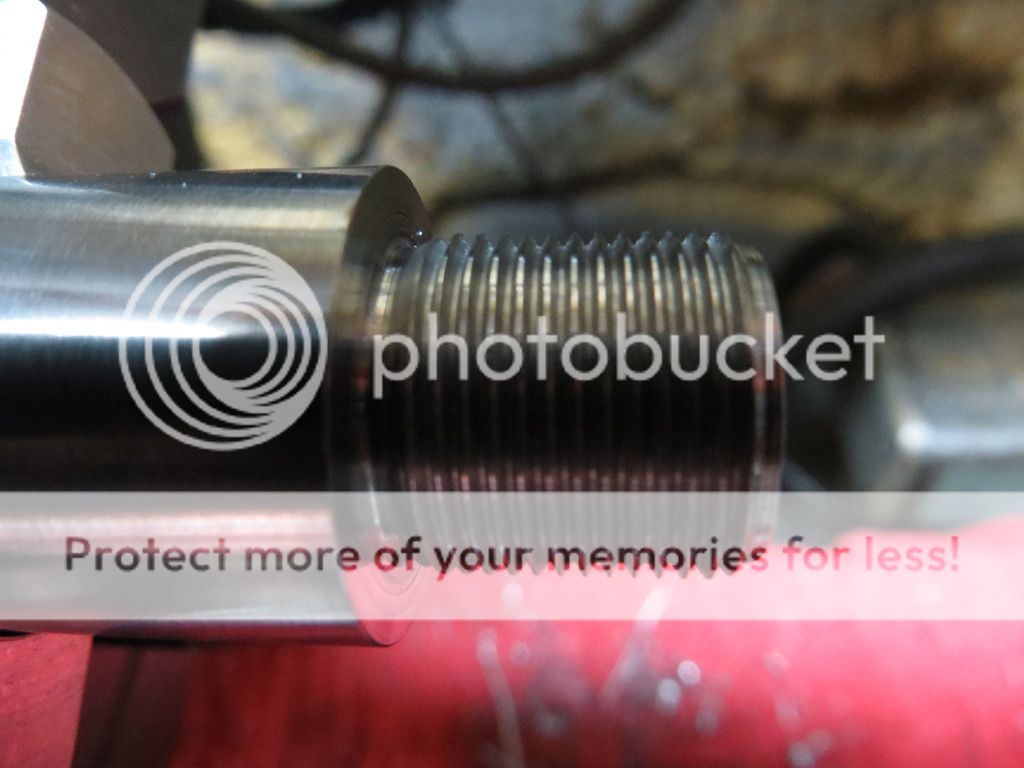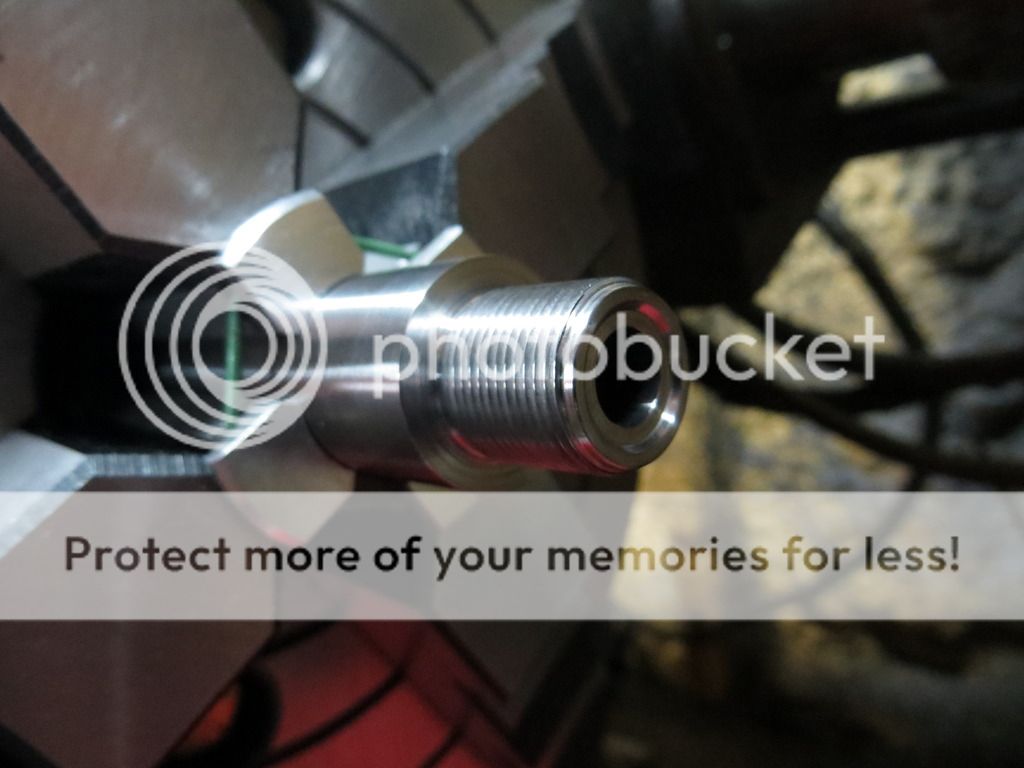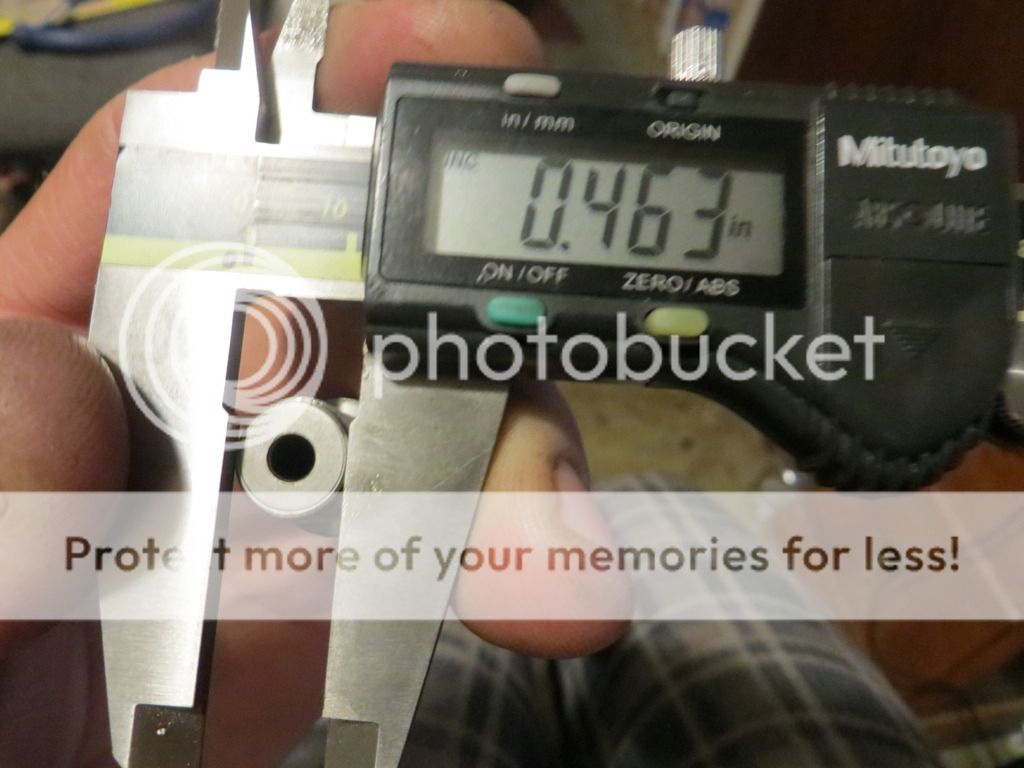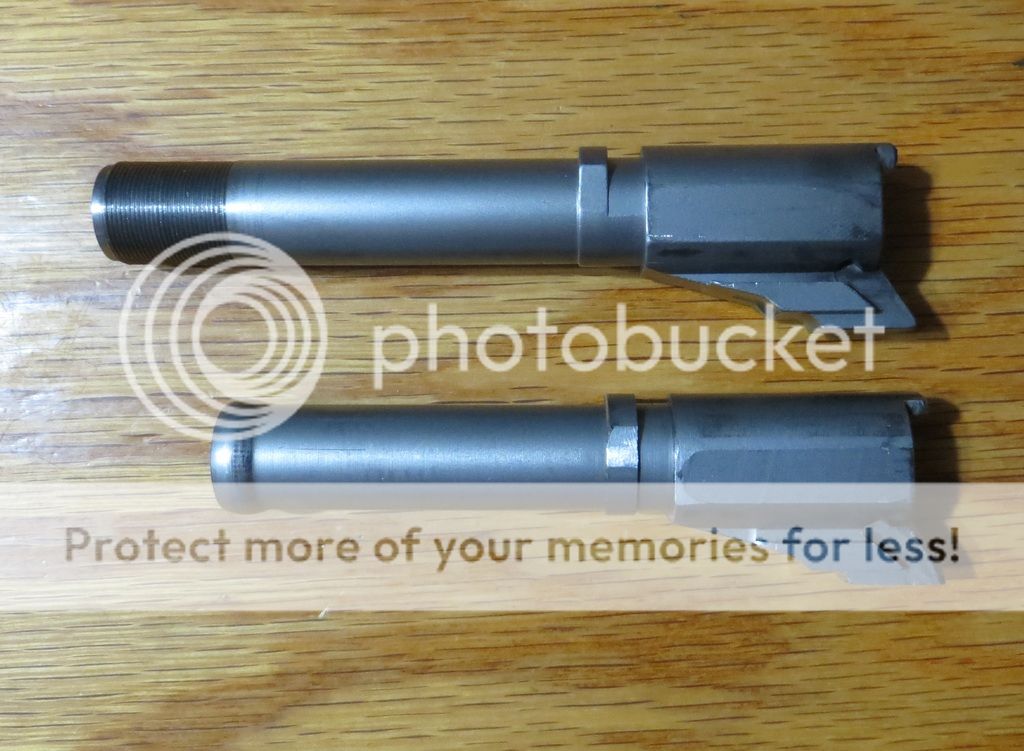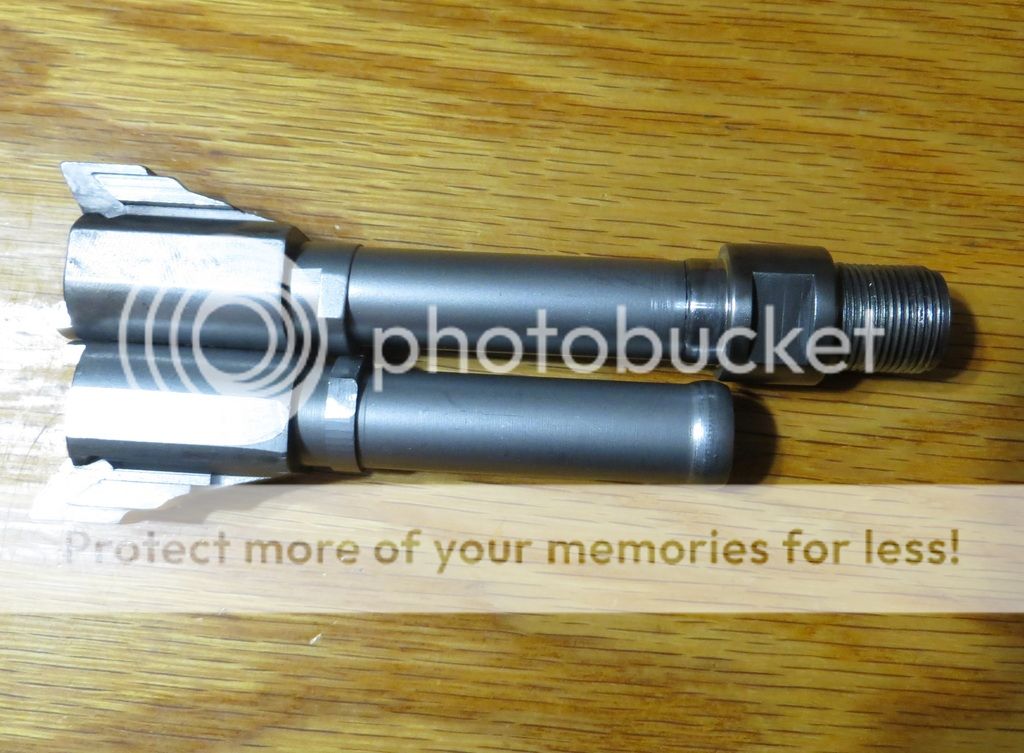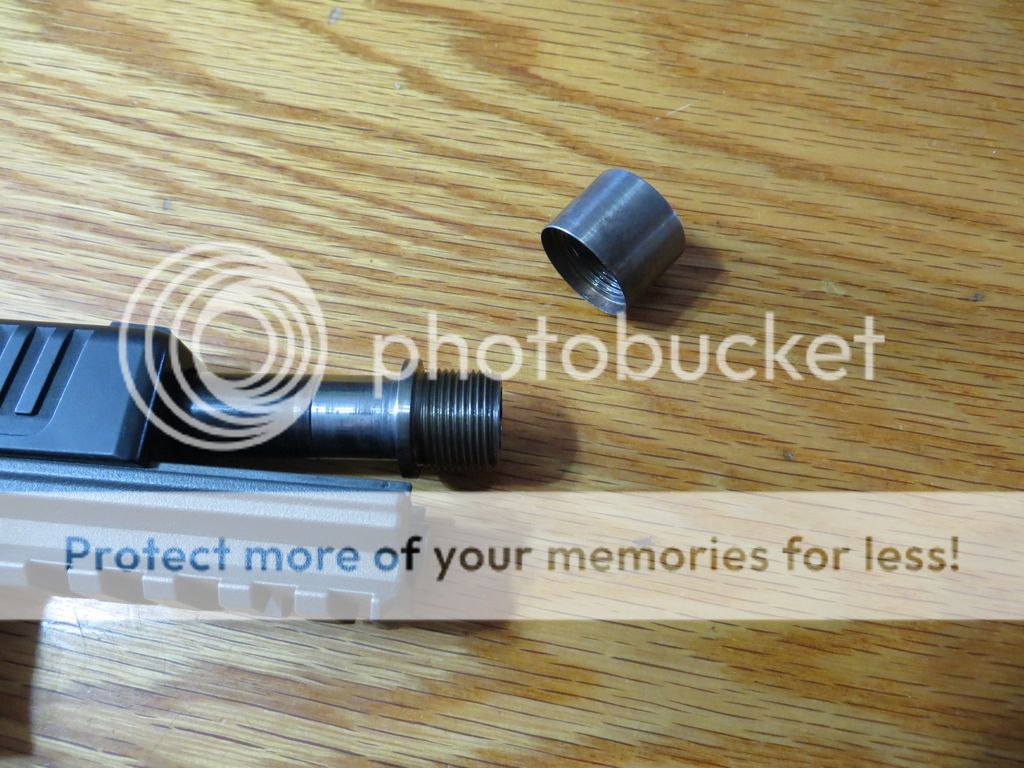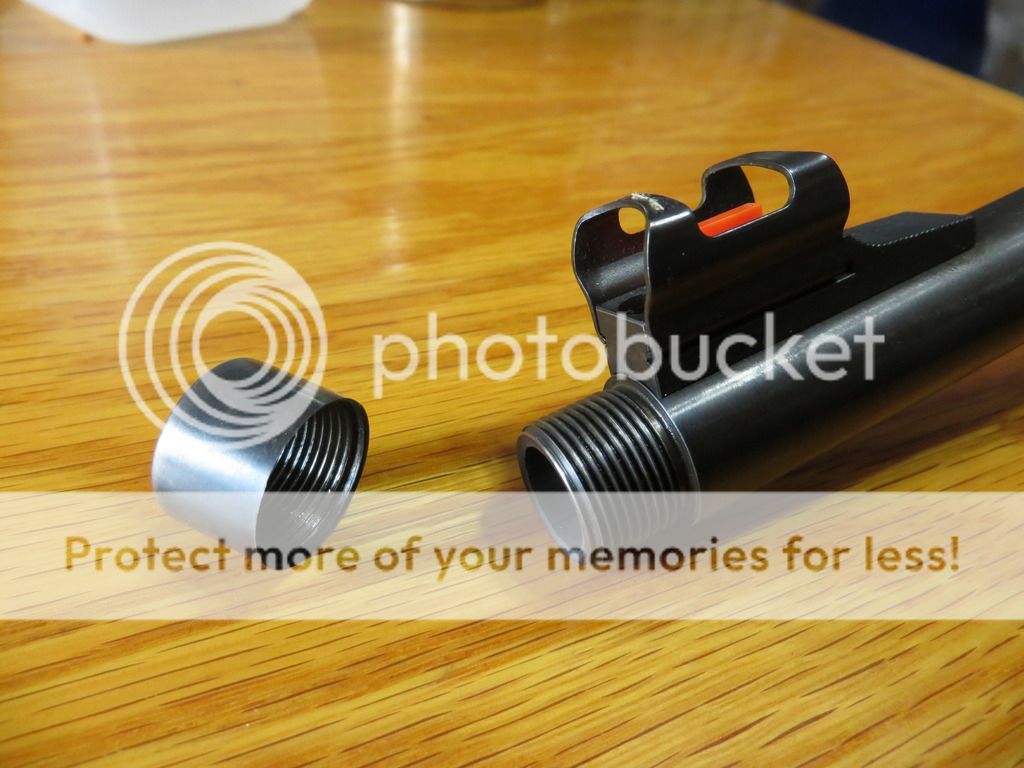Gtscotty
Member
- Joined
- Jul 2, 2007
- Messages
- 3,635
I recently bought a lightweight titanium can expressly for deer/elk hunting, and would like to start threading my main hunting rifles while my new suppressor is in NFA jail.
The problem I'm running into is that the light rifles I'd like to use don't have enough meat at the end of the barrels to form an adequate shoulder. The suggested minimum barrel diameter for a 9/16x24 thread is 0.662, and for the standard 5/8x24 is 0.725.
My two favorite hunting rifles are a Browning X-Bolt and a Tikka T3 SL. The Browning has a barrel diameter of 0.599" at the muzzle and 0.609" 1 inch back. The Tikka has a barrel diameter of 0.625" at the muzzle, and 0.635" 1 inch back. Obviously, neither of these barrels meet the minimum diameter for even 9/16x24" anywhere near the muzzle.
I'd prefer not to just thread smaller and slap an adapter on. The best option I've seen is in the following picture stolen from an old thread:

I believe that the gunsmith that did this just threaded further back than usual, turned and threaded a tapered nut to match and then permanently mounted it, providing a decent shoulder on a thin barrel.
Does anyone know a gunsmith who does this kind of thing? I've looked around and came up empty handed.
Are there other good options that would allow me to go at least 9/16" on the threading and still have a decent shoulder. Is anyone else running into similar problems? If so, any tips?
The problem I'm running into is that the light rifles I'd like to use don't have enough meat at the end of the barrels to form an adequate shoulder. The suggested minimum barrel diameter for a 9/16x24 thread is 0.662, and for the standard 5/8x24 is 0.725.
My two favorite hunting rifles are a Browning X-Bolt and a Tikka T3 SL. The Browning has a barrel diameter of 0.599" at the muzzle and 0.609" 1 inch back. The Tikka has a barrel diameter of 0.625" at the muzzle, and 0.635" 1 inch back. Obviously, neither of these barrels meet the minimum diameter for even 9/16x24" anywhere near the muzzle.
I'd prefer not to just thread smaller and slap an adapter on. The best option I've seen is in the following picture stolen from an old thread:

I believe that the gunsmith that did this just threaded further back than usual, turned and threaded a tapered nut to match and then permanently mounted it, providing a decent shoulder on a thin barrel.
Does anyone know a gunsmith who does this kind of thing? I've looked around and came up empty handed.
Are there other good options that would allow me to go at least 9/16" on the threading and still have a decent shoulder. Is anyone else running into similar problems? If so, any tips?


